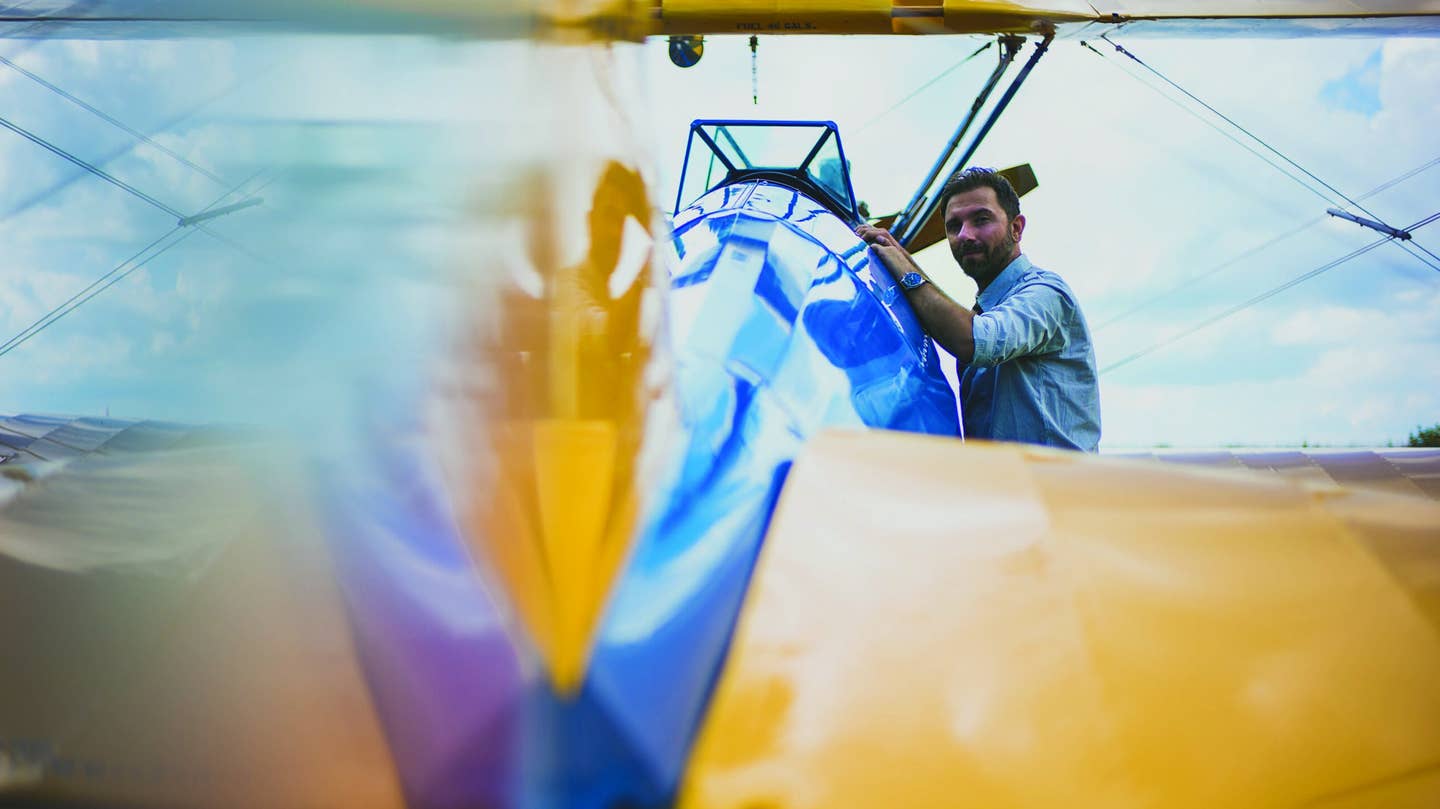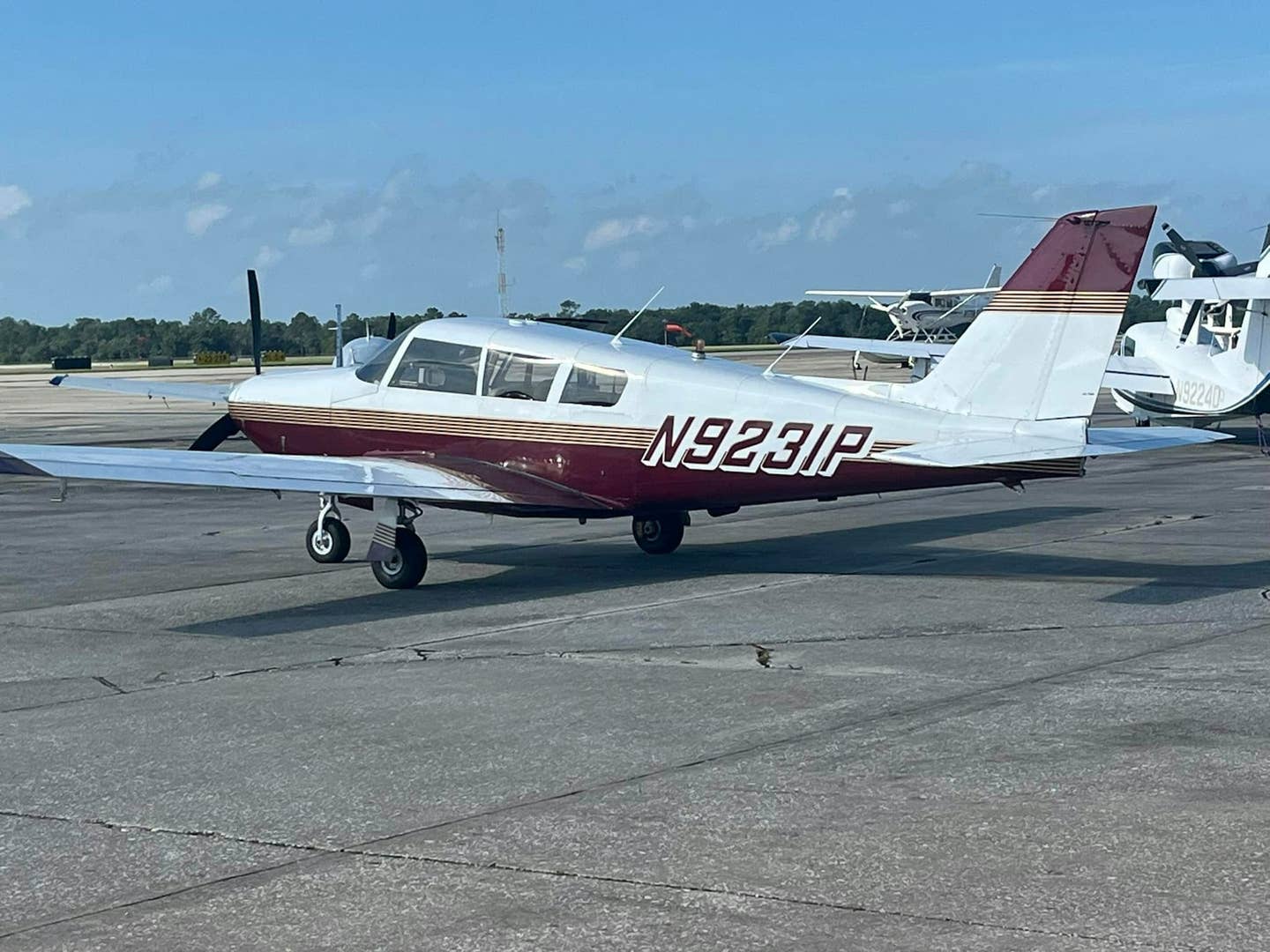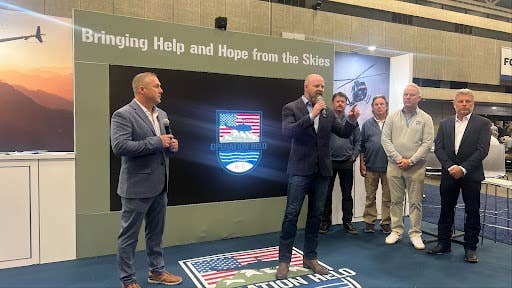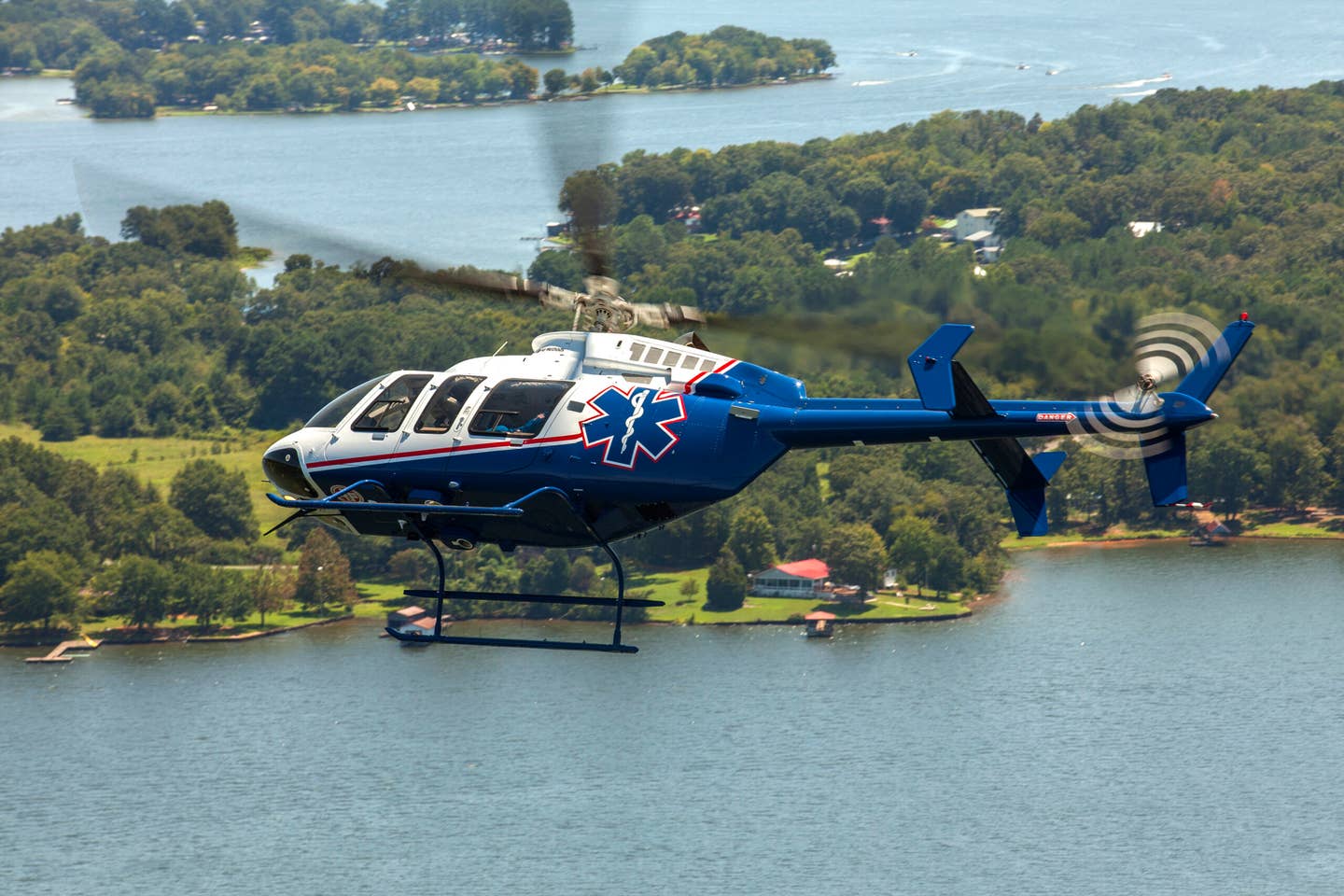
Illustrated by Barry Ross
Christmas Eve 2002 should have been a happy time. It was my first Christmas with my new wife in our new home in Miami. I was a commercial pilot for a small, domestic freight airline. Pilots who do this type of flying are referred to as "freight dogs" because sometimes a day for us can seem like seven years. My normal duty day was 14 hours long, but this being Christmas Eve, I had a short day — just a quick trip to Tampa and back from Opa-locka Airport in Miami. Five hours' total duty — nothing — piece of cake. I kissed my wife goodbye, told her not to peek at her presents, and off to the airport I went.
When I got there, what I saw on the weather radar dampened my Christmas cheer. Yet another cold front was making landfall across Florida. This one was slicing the state in half at a 45-degree angle from east to west, directly blocking my path to Tampa. The line of thunderstorms ahead of the front was so big that there was no way around; the cold front stretched out about 100 miles offshore into the Gulf of Mexico and all the way up to Canada. There was no way I was going to take the single-engine Cessna 210 I flew that far over the ocean at night. That left me with two options: I could cancel the flight and go home, or I could push on through and hope it wasn't as bad as it looked.
I called my company dispatcher to discuss my options, and of course he didn't like option one. The company never does. He told me that it probably wasn't as bad as it looked — they always say that. In my mind I wanted to politely remind him that he couldn't possibly know how bad it was from the safety of his armchair, in his nice warm office, looking at the death and destruction on TV. I advised him that I was going to delay departure for about one hour to let the weather clear Tampa and see if the line broke up somewhat. Maybe in that time I could find a hole, 10 to 20 miles wide, to go through. My Cessna 210 didn't have airborne radar, and relying on air traffic control for guidance through a squall line isn't very smart. It's not that the controllers don't want to help; it's that their equipment wasn't designed for that and they aren't responsible for keeping airplanes out of nasty weather — that's the pilot in command's job.
My hour was up and there was no change. The line was still solid and intense. However, dispatch had some news for me: One of our guys, Suicide Steve, had made it through the line and said that it wasn't that bad, so perhaps I should give it a try. I really didn't want to, but I relented. … Big mistake. For those of you who don't realize the subtleness of this pressure, it's like Chinese water torture. Every five or 10 minutes the company asks if you can go yet, or if you can give an estimated time of departure. It takes a strong personality to stand up to that pressure, and unfortunately, for a rookie like myself, facing the weather seemed better than risking my job. So, like an idiot, I caved in and said I was going. I had just blown my first chance at a merry Christmas.
For the first 30 minutes of the flight, all was well. However, I could see the huge storm clouds looming up in the distance, lit up thanks to the continuous flashes of lightning. For those of you who have never seen a massive wall of clouds at night constantly lit up by lightning flashes, it is beautiful. It's the most beautiful light show on earth. There was no moon, and on my side of the front it was clear, so I would see nothing but the darkness of the Everglades ahead of me then — flash — the sky would light up and I'd see these gigantic cottony mountains of clouds far up and down either side of the horizon. As I approached the cold front, a great feeling of dread was welling up inside my gut as well as a feeling of amazement and curiosity. What was it like in there? How bad could it really be? I was mesmerized and terrified at the same time. I knew I should turn back, but for some reason I was drawn toward it. I approached the storms like a surfer approaches massive waves: 10 percent awe, 10 percent fear and 80 percent ignorance.
I called Flight Service on the radio to see if there was any change in the radar picture. I was looking for a hole to pass through, but there was nothing. The woman on the radio almost flat-out told me that I was a moron for continuing; she implied it but didn't come out and say it — not that I would have disagreed with her. Chance two missed.
I called the Miami Center controller who was monitoring my flight. I let her know that I didn't have radar and was wondering if she could perhaps provide me with some vectors around the strongest precipitation echoes on her radarscope. Then, I held my breath waiting for her reply.
"I'm sorry," she said. "It's everywhere, and there is nowhere to vector you except back to Miami. I'm sorry."
In a feeble attempt at bravado, I replied, "That's OK. You could feel worse; you could be up here with me."
Ha, ha, ha; third chance not taken.
I continued on, finally entering the clouds. I could no longer see the gigantic cumulonimbus buildups that surrounded me but only dull flashes of light that lit up the surrounding white clouds. It soon began to rain, and along with that came some light turbulence. Not so bad at first, and I thought that perhaps dispatch was right — it wasn't as bad as it looked. Then — pow — lightning exploded across the sky in every direction.
Momentarily blinded, I heard the rain intensity increase tenfold, becoming so loud as to drown out the engine and airflow sounds. I turned up the panel lights to full brightness to reduce the effect of the lightning, which was everywhere. Quickly, the turbulence increased. At first there were some moderate bumps here and there, then constant moderate chop followed quickly by severe to extreme turbulence. I was thrown about violently in my seat even though I had the seat belt and shoulder harness tightened so much that I could barely breathe. My flight bag hopped up and down like a jumping bean, spilling its contents all over the cockpit. Everything in the airplane that wasn't lashed down was flying around and crashing into the cabin and me. At one point I banged my head on the ceiling, which was a good six inches above me.
Now, I'm not a religious man, but I knew it was time to slow the airplane down and pray. With continuous severe turbulence, just keeping the airplane upright was a full-time job. I was climbing and descending anywhere from 500 to 1,000 feet in a matter of seconds with the airspeed indicator going from the never-exceed speed to stall speed and back again. It seemed as if the stall warning was going off continuously, and the vertical speed indicator was useless; it would be pegged out at the top then swing rapidly to peg out at the bottom. The entire airframe rattled and groaned under the strain. The airplane made noises I had never heard before. … I made noises I had never heard before. It felt like the airplane was being torn apart by some large, angry dog. I was a dog biscuit airplane trapped in his mouth and he was shaking it violently side to side, trying to get to the juicy surprise in the middle — me.
With blinding flashes of lightning so close that at one point I thought I had been struck, the rain became so intense that I saw the tips of my propeller turn green with the static electricity of Saint Elmo's fire. The radios and the lights flickered several times. At this point all I was doing was keeping the wings level and trying very hard not to panic and jump out. Then the hail came. In the midst of the torrential rain, little pellets of hail started making a god-awful racket on the cowling and windows. These hailstones were about the size of nickels and dimes — I got a good look at them through the windshield. Accompanying this hail was a terrible downdraft. I noticed I was losing altitude fast, much faster than before. I was now at 4,000 feet and sinking fast; I had originally been at 6,000 feet. I quickly called center and said I was in hail and couldn't control altitude. I don't remember the response. I had full power, the yoke pulled all the way back in my lap, and I was still descending at 2,000 feet per minute in the hail and rain. I remember thinking that hail usually accompanies tornadoes, and I sure didn't want to descend into a tornado. There was nothing I could do to stop this crazy plunge. It was as if I had flown under a big hand that was pushing me down into the ground. I thought, "This is it. I've pushed too far. I asked for it."
It finally stopped around 1,500 feet, and I regained some control of the airplane. The turbulence had lessened quite a bit now. I was still in the clouds with moderate rain, but at least I was alive and in control. I called center in a very shaky voice and said I was climbing back to 4,000 feet. They said it was OK; I could stay at 2,000 feet if I wanted. Since I was now seeing some ground lights through holes in the clouds, I stayed low, because those lights reassured me like some child's monster-repelling night light.
Wise pelicans jokingly say, "If ever you're in a thunderstorm, don't look outside; what you see will scare you." I don't consider it joke advice anymore. This horrible encounter with Mother Nature's fury lasted about 10 or 15 minutes, and then it relented — I had passed through the squall line. I was still in clouds and light rain, but the death and destruction seemed to be over. This was confirmed when I whimperingly checked in with Tampa approach control. The weather was actually improving so fast behind the front that, by the time I got to Tampa, it was clear and I managed to land under visual conditions.
After unloading my freight, which could have waited in Miami or been driven to Tampa for all I cared, I walked around the airplane to see if there was damage. There didn't seem to be anything significant apart from some scratches and dents on the cowling and leading edges of the wings, which I assumed were from the hail. There was also a charred, black spot where one of the rear-elevator static wicks had been — I guess I did get hit by lightning after all.
I made a solemn oath to never again do something so cavalier. Of course, I waited five hours before making the return trip home, making sure that the frontal weather had broken up quite nicely — enough for me to either see the storms or ask air traffic control for a vector around the entire area. I ended up working 10 hours that night — so much for a short day and a merry Christmas.
As luck would have it, on New Year's Eve, one week later, the exact same situation was taking shape: Another fast-moving cold front was making landfall and had the accompanying squall line ahead of it, a carbon copy of Christmas Eve. This time, however, when dispatch tried to tell me it wasn't as bad as it looked and that others were making it through, I politely said, "No, thanks, I'm going to wait until there's at least 10 miles between me and those thunderstorms." Twenty miles is recommended, but I thought that might be too much for my dispatcher's weak heart. And that was it. I didn't get fired or yelled at, but most importantly, I didn't age seven freight-dog years like I did on Christmas Eve.
To see more of Barry Ross' aviation art, go to barryrossart.com.
Get online content like this delivered straight to your inbox by signing up for our free enewsletter.

Sign-up for newsletters & special offers!
Get the latest FLYING stories & special offers delivered directly to your inbox






